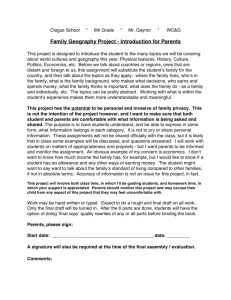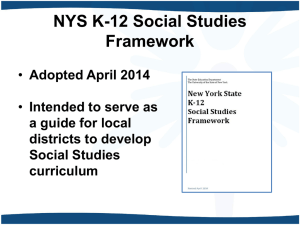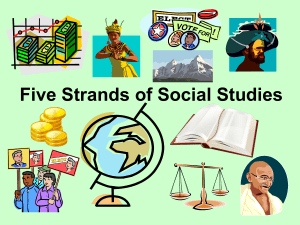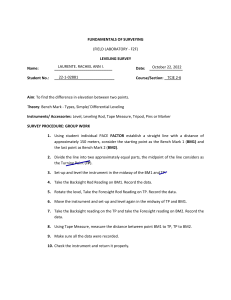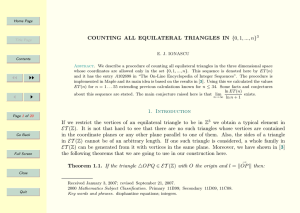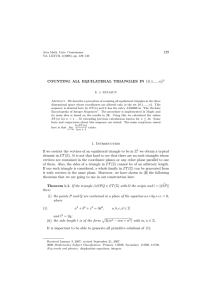Assessment Information
advertisement
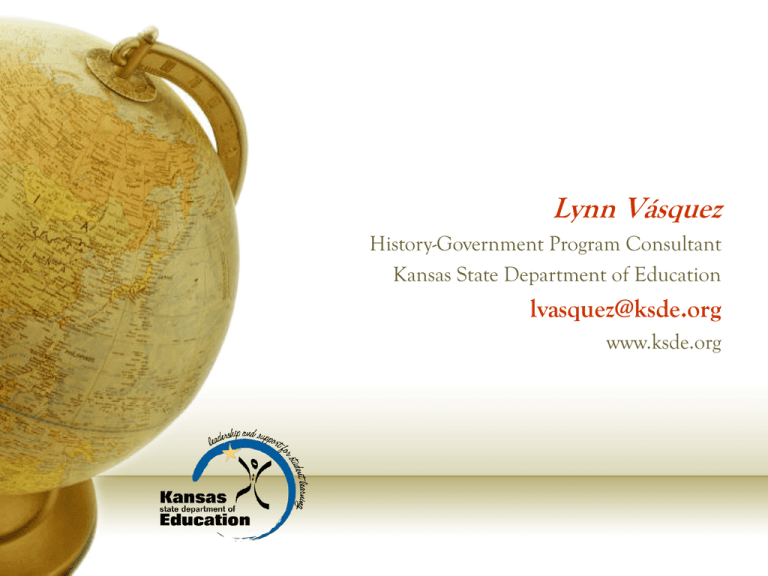
Lynn Vásquez History-Government Program Consultant Kansas State Department of Education lvasquez@ksde.org www.ksde.org 2007-2008 Social Studies Assessment • Testing Window: March 17th-May 9th • KCA and Paper Pencil available • Results are not a part of AYP; but count for QPA • Remains a biennial assessment for QPA • This year only, the state will assess all 11th graders at the high school to establish cut scores • Starting this year, high schools can assess freshman and sophomores to take advantage of Program Opportunity to Learn (OTL) • Flip charts, test and item specifications available at www.ksde.org Testing What has been Taught--Assessment Levels: 6th grade 48 Item Assessment 8th grade 60 Item Assessment High School 30 Item World Focus Assessment & 24 Indicators Pulled from 5th/6th grade 30 Indicators Pulled from the 7th/8th grade 30 Item United States Focus Assessment 30 Indicators Pulled from a cumulative high school experience Portions and Percentages: 60% History 40% Government-Civics, Geography, Economics 6th 8th high school 35% (A) 65% (K) 50% (A) 50% (K) 65% (A) 35% (K) (% of time we spend on the various floors of the 3-story intellect) High School Assessment: After 2007-08 school year, districts decide students’ OTL “End of Program Opportunity to Learn” without second opportunity Part A World Focus Part B United States Focus • World History • U.S. History • Global Geography • Civics-Government • Global Economics • U.S. related economics • 30 item test; results banked until student completes part B • 30 item test; results banked until student completes part A Benchmark themes in geography: BM1:Geographic Tools & Location BM2: Places and Regions BM 3: Physical Systems (science overlap) BM 4: Human Systems BM 5: Interaction between Human & Physical Systems Assessment Information: •Physical Systems is assessed in science, no longer in social studies. (Oxbow lakes, Pangea, soil depositions) •More emphasis of geography related to historical context. How does geography influence world trade? How do locations of cultures/groups change over time? We are better served to teach geography in the context of history. Benchmark themes in civics-government: BM1: rule of law BM2: shared ideals in society BM3: responsibilities of leadership BM4: citizenship/civic participation BM5: systems of government Assessment Information: •Middle School: Expanded in 2005 revision—local government in middle school. Roles of school boards, municipalities; Comparing how juveniles and adults are treated under the law. •High School: The “big ideas” regarding eminent domain, role of political parties, and core values of nations founding documents. More specific in terms of knowing the differences between NATO, UN, Red Cross, etc. Benchmark themes for KS, U.S., & world history: Significance of important people and historical events Groups of people who contributed to our heritage Events & turning points Students engages in historical thinking skills (primary v. secondary documents, historical thinking skills, inferred v. observed information) Assessment Information: •Several indicators that use primary/secondary sources at every assessed level! Provide opportunities for your students to engage with 1800’2 early 1900 language of people and law (involuntary servitude; perverted government; trespassing; legal use of passage). The use of quotations, excerpts from publications, probably far outnumber the use of political cartoons or other examples of satire. Economic benchmarks: BM1: limited resources require choices BM2: market economy BM3: local, national, and international interdependence BM4: role of government in the economy BM5: making effective decisions as consumer, producer, saver, investor and citizen Assessment Information: •Economic indicators are assessed in historical context or modern day context: (factors that influence international trade – might be cast in historical context: Economic consequences of the war of 1812; or what would happen to prices if Germans boycotted Japanese products? •More international focus/global economic literacy than prior assessment •Natural fit is to teach economics integrated within the historical context. Several districts embedding econ in US and World history since economics is still an elective in most high schools.
